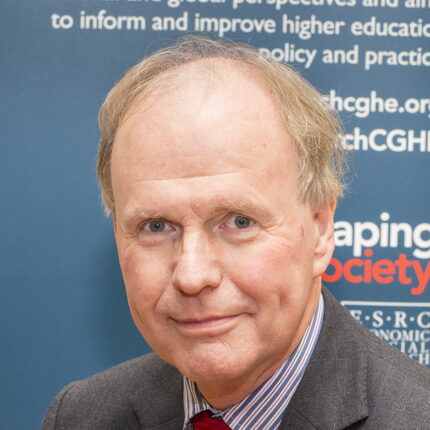So we have finally arrived. The state – or the Office for Students which is pretty much the same thing – can now tell universities which courses they can offer, or at least limit the number of students they can recruit on targeted courses in the hope they will be promptly closed.
That is the bottom line of the government’s latest, and presumably final, response to the Augar committee which reported to Theresa May, three Prime Ministers ago.
What to say
There are two possible responses to this news.
First, we have been a long time travelling this road. For more than half a century the state has encroached more and more on the autonomy of universities, even – or maybe that should be, especially (as in the 2017 Higher Education and Research Act) – when it claimed to be doing the opposite.
OfS through its existing regulatory framework already has the power effectively to close courses, and its antecedent funding councils also had significant powers over universities, although they tended to be of the nuclear variety and so unusable. Accordingly the government’s latest plans are not some kind of coup that has come out of the (deep) blue. They are the culmination of a long-time direction-of-travel in national higher education policy.
The second possible response is it doesn’t matter anyway because very few, if any, courses, will be forcibly closed (or number-capped), not at any rate in what ministers might call “proper” universities. Any action will be at the margin among the more dodgy alternative providers, and maybe a few further education colleges. Universities are perfectly able themselves to identify, and take action on, under-performing courses with low student satisfaction, high non-continuation rates and uncertain graduate outcomes. That is the whole point of the “size and shape” exercises that have become so popular.
Performativity
The government’s plans are essentially performative, as many of its plans are. Does even the Home Secretary really believe a significant number of immigrants, or asylum seekers, will ever be forcibly removed to Rwanda?
The government’s “crack-down” on “rip-off” courses has already earned lead stories in the Daily Mail and Daily Telegraph. Job done. Nor does it matter that not much money will end up being saved, presumably one of the formal aims of the government’s plans. Although up to one in five graduates does not earn an adequate rate of return on their higher education according to some calculations, no government is going to risk the political damage likely to be incurred by downsizing higher education opportunities by 20 per cent.
This second response is almost certainly complacent. Even if the direction of travel was set long ago, the speed of the journey has been radically accelerated. OfS has powers over higher education as a mere regulator that as a majority funder the Higher Education Funding Council for England could only dream of in its most dirigiste aspirant-planner moments.
The removal of the student number cap, the saving grace of the Willetts reforms a decade ago and the only basis on which it could be claimed they had introduced a market into higher education, has been definitively abandoned. The latest announcement also comes against a background of other anti-university moves by the government, including the US-derived “war on woke” and restrictive rumblings on international students (hiking visa fees, banning dependents, curbing overall numbers and the rest).
You can never go back
The history of public policy suggests that powers once taken are never given back, however sparingly they may be used at first. As for the student number cap the Treasury has got back what it conceded in a moment of weakness or blindness a decade ago, control over public finances. So no reversal in prospect there either. More likely is a wider extension of student number controls.
Nor should we rely on the supposed constraints on full implementation of the government’s “rip-off” courses agenda to mitigate its impact. Of course, continuation rates are not always what they appear. Graduate Outcomes even less so. But the absence of useful information about individual graduate salaries and other data deficiencies and the difficulty of matching subject groups to individual courses will simply make policy interventions blunter and cruder not inhibit them. Aggregate data exists on comparative graduate earnings. There is a clear definition of graduate jobs, however contested and subject to revision.
The government, and to be fair others, believes that too many young people go to university, by which it essentially means full-time courses in academic and professional subjects for school leavers with good A level grades. It conversely believes that too few to something else – further education, apprenticeships, direct employment (given the post-Brexit labour shortages). So maybe ministers believe cutting “rip-off” courses in higher education can help restore the balance.
Unbalanced
There are three problems with this belief.
- Even the most traditional university does far more than offer full-time courses in traditional subjects for socially advantaged young people. A powerful effect of the abandonment of the binary distinction between universities and polytechnics three decades ago, by a rather more moderate Conservative government, was radically to enlarge the idea of a university, aided of course by powerful social, economic and cultural forces. Ministers, and many civil servants, fail to register that much of what they regard as the further education alternative is now to be found in higher education, predominantly but not exclusively in the post-1992 universities.
- The effect of the Willetts reforms – high tuition fees backed by loans and no student number cap – has been to enable Russell Group and other highly ranked universities to grow, some of which are now probably too big to offer their students the experience they deserve, at the expense of other universities with firmer roots in technical and vocational education. In other words, they have produced the very imbalance between academic and vocational education about which ministers complain. What other effect could have been possible from a market driven by status rather than price?
- The “rip-off” courses, which are to have their number capped (and, hopefully, then closed), are unlikely to be found in the mainstream university core, and among traditional academic subjects. This core will be unaffected. Instead they will be found in the more vocationally oriented parts of higher education. So, like the Willetts reform, although for different reasons, it will make the same imbalance worse.
One of the most persuasive objections to the government’s plans is their impact on fair access. Most obviously, many foundation year courses, so vital for access students, will become non-viable with the lower fee cap (it’s worth remembering Scotland has four-year courses for all undergraduates).
More generally, the courses more at risk of being labelled “rip-off” according to crude metrics on continuation and graduate success are those that recruit more working-class and ethnic minority students. Higher non-continuation rates are linked to more stressful personal circumstances, as much as to lack of academic potential. The attainment gap between different ethnic groups is well known, although sometimes difficult to tackle without being wildly accused of espousing critical race theory. Socially disadvantaged students, whatever their achievements, typically lack the networks that still have too great an influence in guaranteeing high graduate earnings. Alternative providers too, for all their defects, have played an important role in reaching the students that (most) public institutions have struggled to reach.
All these – courses, students and institutions – are the likely targets of the government’s new plans, intended or not. But, for the government, maybe the headlines are enough.













